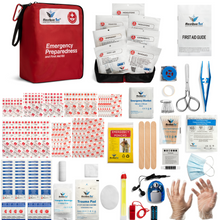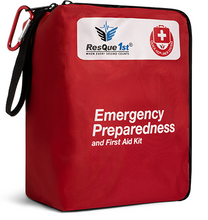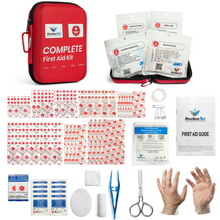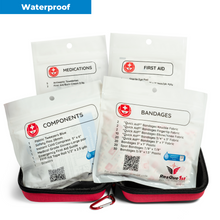For many of us winter weather is a months long reality. Love it or hate it, if you're affected by winter weather it's important to know how it impacts your first aid needs. Cold, snow, ice, and wind can all lead to problems you won't encounter other times of year. Here's what you need to know to treat winter's most common first aid issues.
Slips and Falls: When there's ice on the ground, there's an increase risk of falls. In some cases the only thing damaged by a quick slip is your pride. In other cases, however, you could easily end up with sprain, strain, or broken bone. Here's what to do if you or someone you're with has a fall:
- Sprains and Strains:If your fall led to a strained muscle or a sprained ligament, the best course of action is to follow the acronym RICE - Rest, Ice, Compress, and Elevate. Rest the injured area by using a sling, splint, or crutches. If at all possible, stay off your feet altogether. Hold ice to the injured area for 20 minutes out of every hour. Compress the injury by wrapping an Ace bandage around it. Finally, reduce swelling by elevating the injured limb above your heart. Use over the counter medications as needed to address pain.
- Broken Bones: If you felt or heard a "pop" when you slipped, if the injured area is numb, or if you can't put weight on it, you may have a fractured or broken bone. Seek medical attention immediately.
Hypothermia: Hypothermia occurs when a person's temperature drops below 95 degrees Fahrenheit. At this temperature your body isn't warm enough to function fully. If left untreated hypothermia can be fatal. Keep an eye out for symptoms if you're planning on spending time outside in cold weather. Hypothermia is usually accompanied by moderate to severe shivering, confusion, and a change in heart rate (can be either fast or slow).
If you or someone you're with shows signs of hypothermia, get out of the cold immediately. Take off any wet clothing and wrap up in a warm blanket. Resist the urge to apply direct heat to your body. Instead, use a warm compress on your chest, neck, or groin. If the affected person's breathing stops or seems shallow, call 911.
Frostbite: Exposure to extreme cold can cause skin tissue damage known as frostbite. Most common in the extremities (including the fingers, ears, nose, and cheeks), frostbite is usually accompanied by skin discoloration and feelings of numbness. If you suspect you or someone you're with may have frostbite, get out of the cold as soon as possible. Soak the affected area in lukewarm (not hot) water for 15 to 30 minutes. Don't use direct heat, and avoid walking if your toes or feet are frostbitten. You should notice a tingling sensation as the injured skin warms. If the area remains numb or if blisters develop, seek medical attention.









